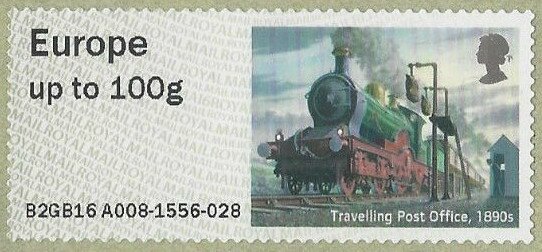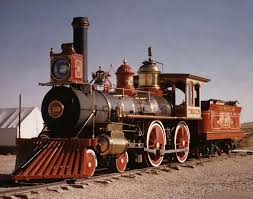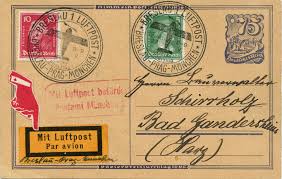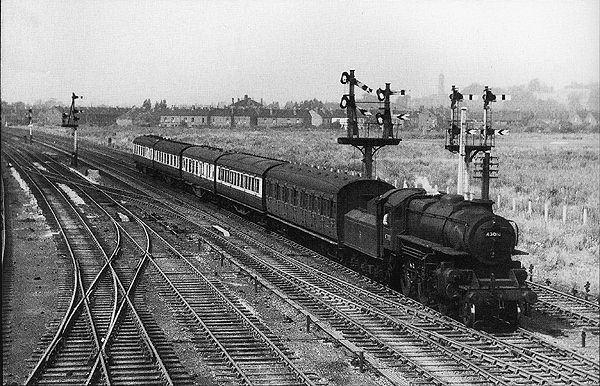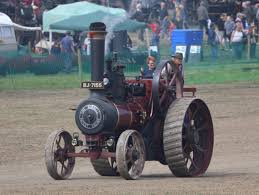Stamp: Travelling Post Office, 1890s (United Kingdom of Great Britain & Northern Ireland 2016)
Travelling Post Office, 1890s (United Kingdom of Great Britain & Northern Ireland 2016)
17 February (United Kingdom of Great Britain & Northern Ireland ) within release Royal Mail Heritage: Transport goes into circulation Stamp Travelling Post Office, 1890s face value Various No Face Value
| Stamp Travelling Post Office, 1890s in catalogues | |
|---|---|
| Michel: | Mi: GB AT106I |
Stamp is horizontal format.
Possible face values: 1st Class up to 100 g (initial value: 63 p) 1st Large up to 100 g (initial value: 95 p) Euro 20 g / World 10 g (initial value: 1 £) Worldwide up to 20 g (initial value: 1.33 £) Europe up to 100 g (initial value: 1.52 £) Worldwide up to 100 g (initial value: 2.25 £)Also in the issue Royal Mail Heritage: Transport:
- Stamp - Royal Mail Minivan, 1970s face value Various;
- Stamp - Mail coach, 1790s face value Various;
- Stamp - Falmouth packet ship, 1820s face value Various;
- Stamp - Travelling Post Office, 1890s face value Various;
- Stamp - Post boy, 1640s face value Various;
- Stamp - Airmail, 1930s face value Various;
- Stamp - Travelling Post Office, 1890s face value SD1;
Stamp Travelling Post Office, 1890s it reflects the thematic directions:
A locomotive is a rail transport vehicle that provides the motive power for a train. If a locomotive is capable of carrying a payload, it is usually rather referred to as a multiple unit, motor coach, railcar or power car; the use of these self-propelled vehicles is increasingly common for passenger trains, but rare for freight trains.
Postal history is the study of postal systems and how they operate and, or, the study of the use of postage stamps and covers and associated postal artifacts illustrating historical episodes in the development of postal systems. The term is attributed to Robson Lowe, a professional philatelist, stamp dealer and stamp auctioneer, who made the first organised study of the subject in the 1930s and described philatelists as "students of science", but postal historians as "students of humanity". More precisely, philatelists describe postal history as the study of rates, routes, markings, and means (of transport).
Railways - Transportation system made up of metal rails which is designed to allow trains to maneuver on the tracks from one location to the next.
A traction engine is a steam-powered tractor used to move heavy loads on roads, plough ground or to provide power at a chosen location. The name derives from the Latin tractus, meaning 'drawn', since the prime function of any traction engine is to draw a load behind it. They are sometimes called road locomotives to distinguish them from railway locomotives – that is, steam engines that run on rails.
